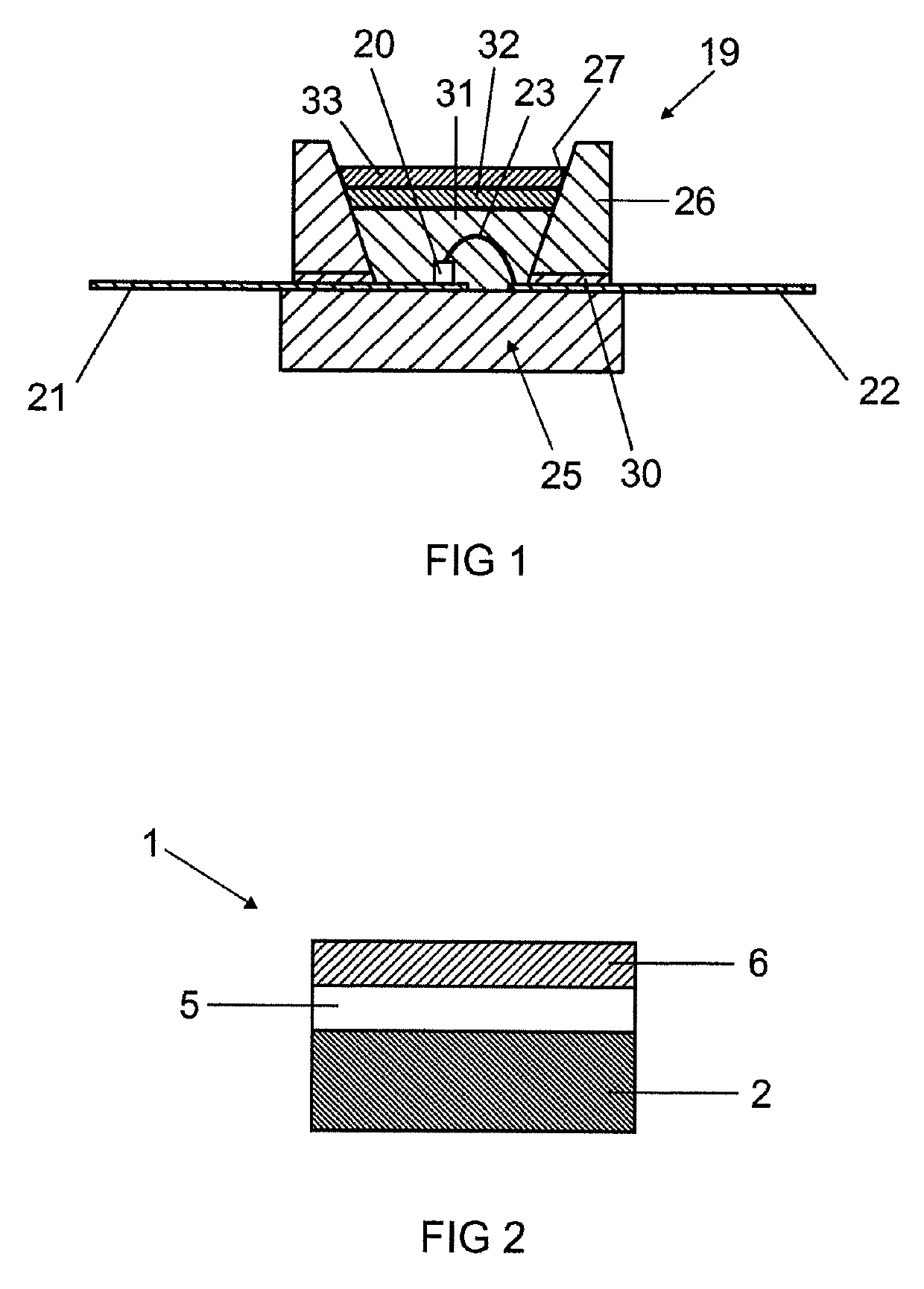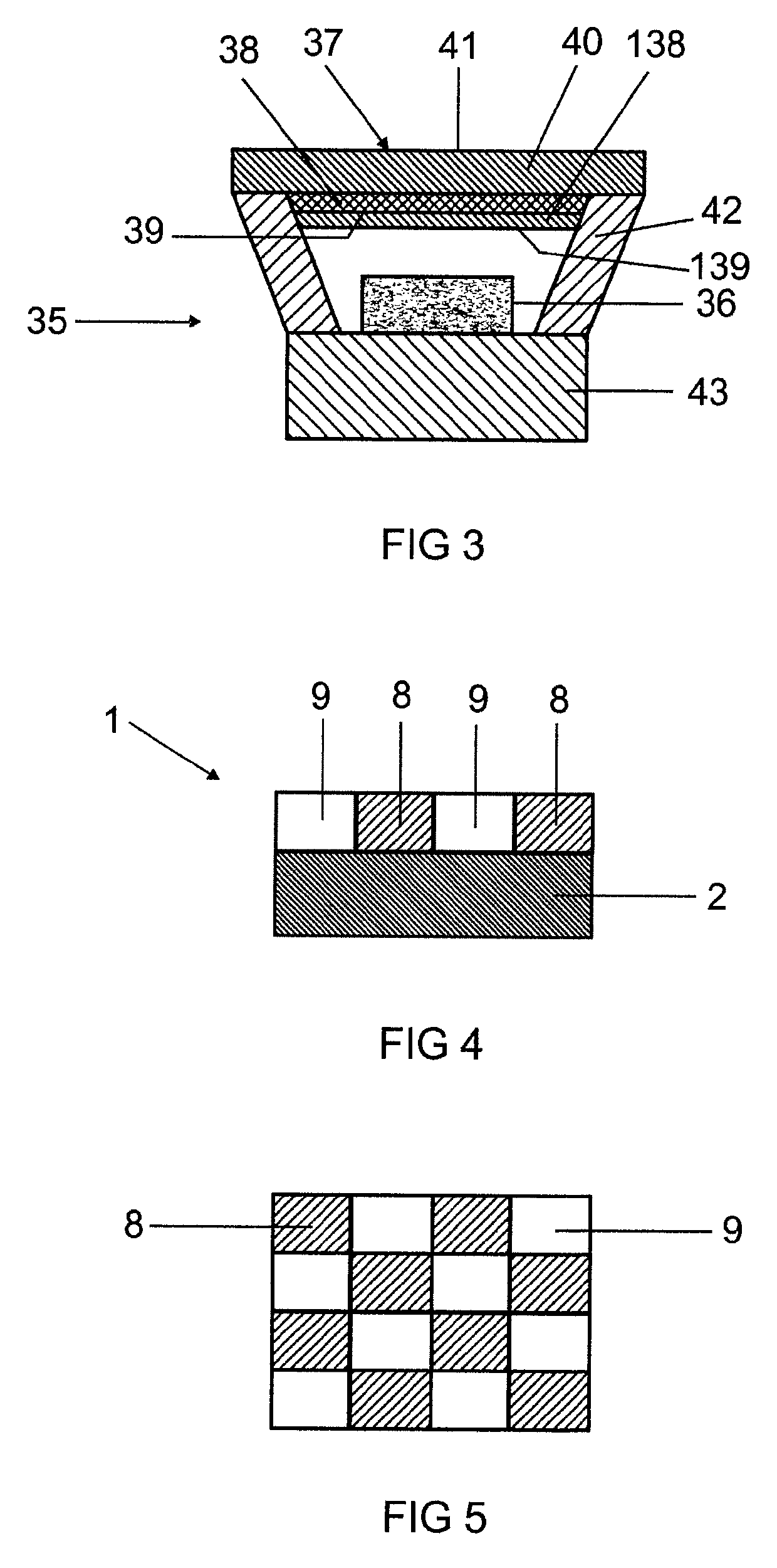Optoelectronics semiconductor component
a technology of optoelectronics and semiconductors, applied in the direction of solid-state devices, electric lighting sources, electric light sources, etc., can solve the problems of poor thermal conductivity of phosphor, short service life, and insufficient temperature resistance, so as to increase the thermal conductivity, increase the efficiency, and prolong the service life
- Summary
- Abstract
- Description
- Claims
- Application Information
AI Technical Summary
Benefits of technology
Problems solved by technology
Method used
Image
Examples
example 2
[0047]A chip surface is coated using phosphor powder, for example, LuAG:Ce. The powder layer is then spray coated using an aqueous solution of a metal phosphate according to Example 1. The drying is subsequently performed at low temperatures (≤150° C.), optionally additionally at reduced ambient pressure. The condensation is performed in oxidizing atmosphere in the temperature range of 200-350° C. for a few seconds up to one hour. The first, already condensed layer is now coated using a second phosphor powder, for example, a nitride. This powder layer is spray coated using an aqueous solution of a metal phosphate, for example, aluminum monophosphate Al(H2PO4)3, which additionally also contains other phosphates, for example, Mg and / or Zn. The drying is subsequently performed at low temperatures (≤150° C.), optionally additionally at reduced ambient pressure. The condensation is performed in oxidizing atmosphere in the temperature range of 200-350° C. for a few seconds up to one hour....
example 3
[0048]A suspension, consisting of garnet phosphor powder and, for example, an aqueous aluminum monophosphate solution according to Example 1, is applied as a web to a circular-surface highly reflective substrate (aluminum as is typically used in the light application), and then dried and condensed according to Example 2. Before the coating, the substrate can be irradiated using UV for better wetting. A further suspension is applied as a web adjoining the narrow side of this web. It consists of an aqueous solution of a metal phosphate, for example, aluminum monophosphate Al(H2PO4)3, which additionally also contains other phosphates or oxides, for example, Mg and / or Zn and / or B, and another phosphor powder, for example, a nitride. This layer is dried and condensed according to Example 2. In this manner, for example, color wheels for laser applications may also be produced, which are described in greater detail in the contemporaneous German patent application having the official refere...
PUM
| Property | Measurement | Unit |
|---|---|---|
| temperature | aaaaa | aaaaa |
| temperature | aaaaa | aaaaa |
| temperature | aaaaa | aaaaa |
Abstract
Description
Claims
Application Information
 Login to View More
Login to View More - R&D
- Intellectual Property
- Life Sciences
- Materials
- Tech Scout
- Unparalleled Data Quality
- Higher Quality Content
- 60% Fewer Hallucinations
Browse by: Latest US Patents, China's latest patents, Technical Efficacy Thesaurus, Application Domain, Technology Topic, Popular Technical Reports.
© 2025 PatSnap. All rights reserved.Legal|Privacy policy|Modern Slavery Act Transparency Statement|Sitemap|About US| Contact US: help@patsnap.com


